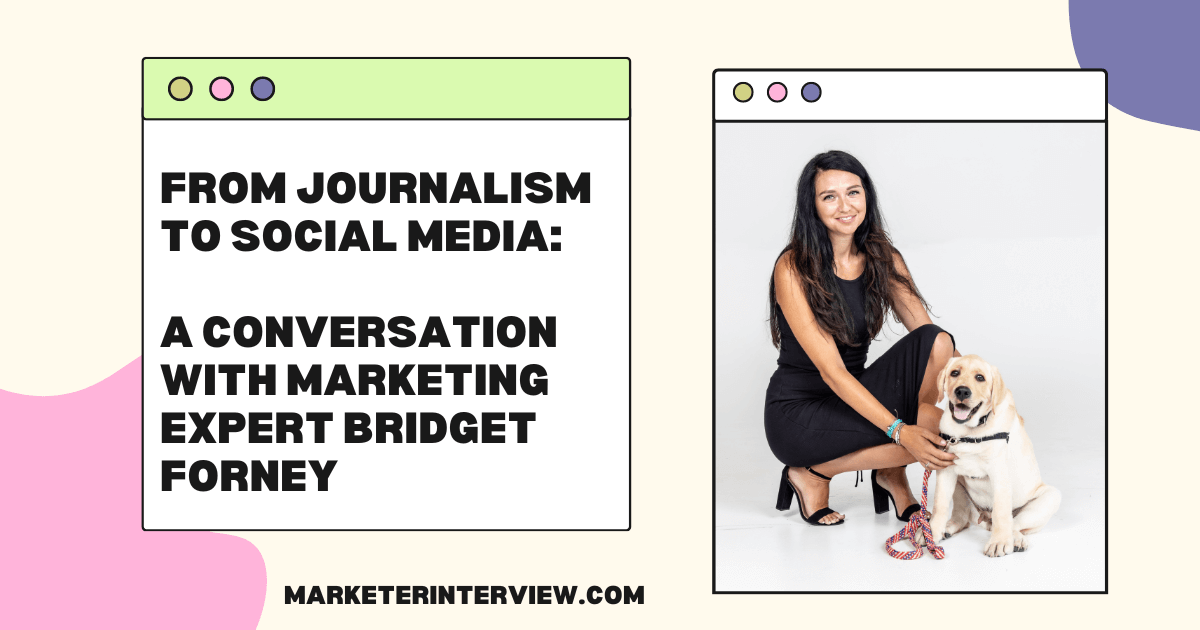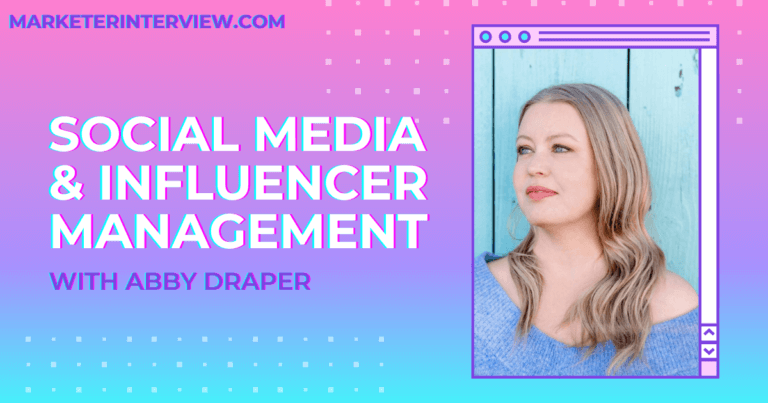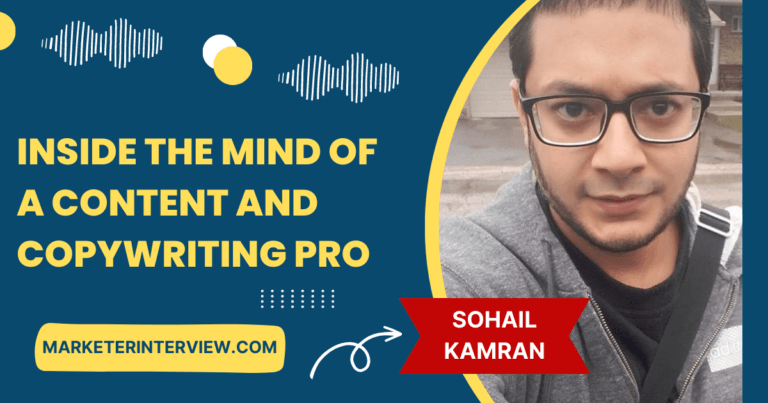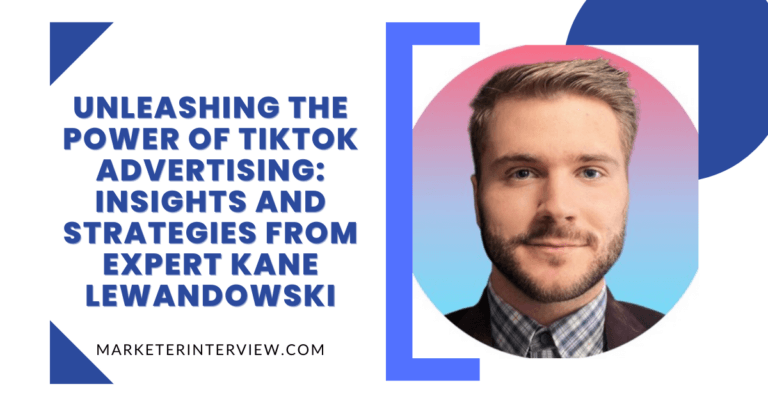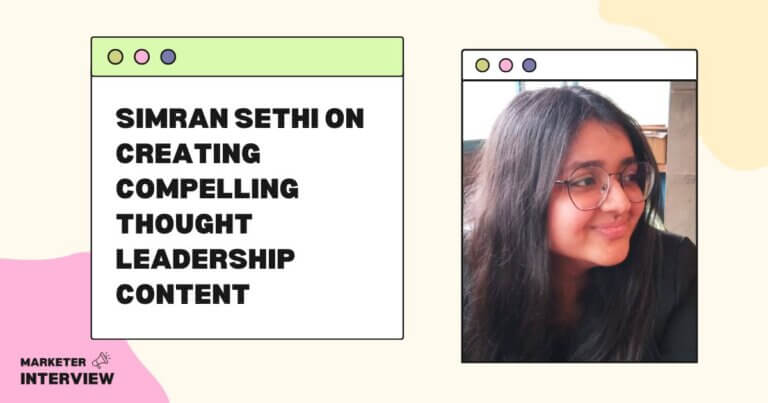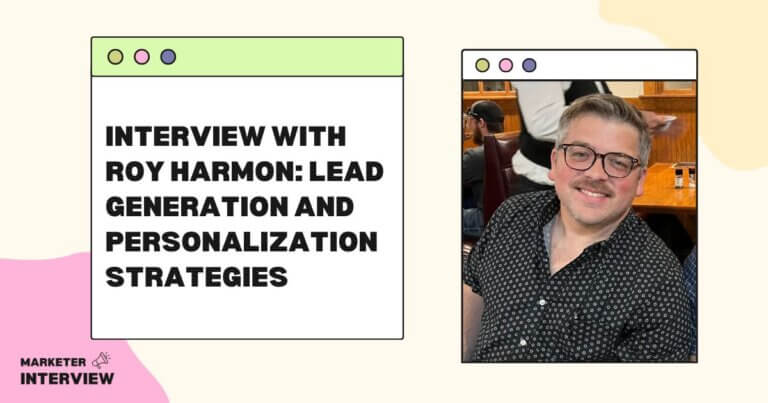From Journalism to Social Media: A Conversation with Marketing Expert Bridget Forney
From Journalism to PR to Social Media, Bridget Forney’s career journey has been nothing short of dynamic.
As Vice President, Head of Social at PROFILES, Bridget has built a formidable team, streamlined social media services, and created new processes for content marketing and client services. But what sets her apart is her ability to stay ahead of emerging technologies and trends, and to help clients navigate the rapidly evolving marketing landscape.
In this interview, Bridget shares her thoughts on the current state of the marketing industry, how to stay up-to-date on the latest developments, and how to balance creativity with practicality when it comes to meeting business objectives. She also talks about her work with service dogs for veterans, and how that experience has helped her see the world in a different light.
Contents
- 1 Could you tell us about your career journey? How did it lead you to your current role as the VP of Social at PROFILES?
- 2 What are your thoughts on the current trends and challenges in the marketing industry? How do you see them evolving in the near future?
- 3 How do you stay updated on the latest developments and emerging technologies in the marketing industry? How do you incorporate them into your work for clients?
- 4 What advice do you have for someone who wants to get into the marketing industry?
- 5 If you could change anything about your career, what would it be?
- 6 What’s been the biggest challenge in your career, and how did you overcome it?
- 7 Can you tell us about a project you worked on that required you to shift between strategy and execution? How did you manage to balance both aspects effectively?
- 8 How do you measure the effectiveness of earned and paid media strategies for client campaigns?
- 9 How do you handle client expectations when it comes to the results of their campaigns. How do you communicate progress and success to them?
- 10 How do you approach networking and potential client outreach. What do you think sets your approach apart from others?
- 11 How do you balance the need for creativity in your work with the need to meet business goals and objectives for clients?
- 12 Bonus Question: I understand that you have expertise in training service dogs for veterans. Could you please share with us the motivation behind your decision to pursue this noble cause and shed some light on your overall experience?
Could you tell us about your career journey? How did it lead you to your current role as the VP of Social at PROFILES?
In April 2008, I began applying and interviewing for journalism positions across the region. I went for an interview at a PR agency for practice, and they offered me a job as a junior account executive.
Given the limited prospects in the journalism industry at the time and compelled by the company’s mission around storytelling, I accepted the job and quickly became a mentee of Baltimore-known PR powerhouses Amy Burke Friedman and Amy Elias. I launched the agency’s first social media service lines in 2009 and pioneered successful social media strategies and campaigns for clients that were then implemented in markets across the US.
While I had long felt that PROFILES was my dream job, it was the promise of working with national CPG brands – and the opportunity to expand my skill set – at a large agency that gave me the courage to leave. I left PROFILES and sought opportunities to work with a variety of brands, including those that were nationally-known, as well as those that were seemingly unsexy. I was looking for a PR challenge on a national scale but also a challenge in securing stories that weren’t easy. I found what I was looking for in PR roles within corporate environments, as well as in franchising.
After gaining additional agency and corporate experience outside of PROFILES, I boomeranged back to the Amys in 2017.
During my second term at PROFILES as Vice President, Head of Social, I built an official social media department for the agency from scratch, creating new processes for content marketing and client services that allowed the agency to streamline its social media services and scale the offering to grow its social media portfolio.
Lastly, I am also often sought out by clients for my data analysis, graphic design/campaign, and online/web capabilities. I built custom online assets and websites for clients, including T. Rowe Price’s Bmore CoLab and Paul’s Place, in addition to building the agency’s website for PROFILES.
I am certified in Google Analytics to offer clients premium reporting and marketing attribution analysis. While my title suggests a focus on social media, I lead anything related to business analysis, digital marketing, content, and web development for our clients.
What are your thoughts on the current trends and challenges in the marketing industry? How do you see them evolving in the near future?
You can’t open a screen without hearing or seeing something about AI right now. I believe AI tools will continue to evolve in the months and years to come as more apps and SaaS integrate it as a feature (similar to the way Canva did recently).
I believe what we see now will look like child’s play by this time next year. The challenge with this evolution is that some executives have a short-term mindset working to be the first to develop technologies without accountability to communities or safety mechanisms.
AI is a powerful productivity tool, but it doesn’t replace what we can do. As I always say: a tool is only as good as its user, and we shouldn’t abuse these tools by using them carelessly.
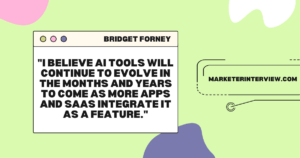
I also think that companies using influencer marketing will be looking for quality and altruism more than ever, specifically some kind of social responsibility angle when collaborating with groups or individuals. Brands are already leveraging influencers, but now they want to know that influencers aren’t just in it for themselves. They’re more likely to partner with influencers who are also aligned with a nonprofit organization or a cause to support.
Another trend I’m seeing is clients choosing to focus on just two or three social media platforms instead of spraying and praying across every platform that exists. I think this is smart given both algorithmic changes, as well as audience differentiation across platforms and varying appetite for content depending on the channel.
Challenges that are on my radar are Google’s frequent algorithm updates and the retirement of Universal Analytics in July 2023. The change will make it crucial for businesses to switch to Google Analytics 4 to continue gaining insights about their online audience.
While the original Universal Analytics was rooted in desktop use, consumer behavior has shifted with more reliance on multiple devices and platforms. In addition, data protection and privacy are a big part of this conversation.
I’ll be looking at helping our clients adopt the new GA4 before July 1, how to navigate GA4, and ultimately help clients get the biggest bang for their marketing dollars.
How do you stay updated on the latest developments and emerging technologies in the marketing industry? How do you incorporate them into your work for clients?
This is an exercise in being curious. Every day, I wake up and want to learn. I’m inherently curious about how social media works, why content is successful, and where algorithms and technologies can be manipulated.
I stay updated on new developments by being a voracious reader and podcast listener, an active participant in social media communities, and seeking synergies where something one client is working on might benefit another client or connection in some way.
I’m a visual learner, and I think in pictures, so the best way for me to stay up to date is by using the tools and technologies that I’m talking and teaching about. I incorporate everything I learn into my work for clients on daily status calls and email correspondence.
I also created a social media handbook for our internal team, where many things I learn are documented, and some become new processes or protocols that everyone on the team can reference and implement.
Because we’re a small agency at PROFILES, we’re able to be really agile, pivot quickly, and incorporate new learnings almost immediately. Sometimes we build planes as we fly them if we know the outcome will offer an immediate benefit to our clients.
What advice do you have for someone who wants to get into the marketing industry?
Show everyone you meet that you can communicate smartly, effectively, and professionally.
Sometimes that means showing a sense of urgency when responding to an email the same business day. Sometimes that means making sure you don’t have any typos in your correspondence. Sometimes that means picking up the phone or asking a question you’re afraid to ask.
If you don’t ask, you don’t get. Ask the question. Ask for what you want! If someone doesn’t know the answer, they will hopefully tell you how or where to find it. Talk to everyone and make connections. Show everyone you meet that you’re not afraid to communicate, and you’re not afraid to do it well.
At the end of the day, communication is a timeless skill that translates across every marketing specialty. If you can communicate well, you can be taught or coached. Communicating well is a sign of commitment to your craft because there are many people who can’t.
If you could change anything about your career, what would it be?
I would like to have a stronger professional relationship with social media platform founders and leaders.
If there was an opportunity for platform founders and executives to hear from brand social media managers and agencies in a way that fostered collaboration over competition, it would be a great way to connect with and learn from others, in addition to collaborating on solutions for common problems and challenges.
I know our agency is relatively small, but we are the end-users of a lot of Meta, Twitter, LinkedIn, and TikTok creator and business tools. It would be nice to have a greater contribution to those products and their creators.
What’s been the biggest challenge in your career, and how did you overcome it?
The biggest challenge in my career so far has been learning how to manage others as individuals and teams as a group, and it’s something I work at improving every single day.
The challenges a person in charge of a team has to deal with can include documentation of processes and frameworks, cross-departmental alignment, mentoring, paperwork, performance reviews, personalities, and more.
Managing a team in a remote work setting comes with its own challenges. I recently took a course on how to manage remote teams by GitLab and learned so much about what makes a strong team in a remote environment with asynchronous communication. My goal is to create a successful remote team that’s built on trust and communication.

Can you tell us about a project you worked on that required you to shift between strategy and execution? How did you manage to balance both aspects effectively?
Because PROFILES is a small team of less than 10 people, each of us is often shifting between strategy and execution on nearly everything we do.
When it comes to strategy, I find that documentation of frameworks and approaches is really helpful while project management offers more structure in the execution process and staying on task while carrying a defined strategy through every tactic.
In executing, our team uses a project management tool like Monday.com to keep the whole team on task with all deadlines and action items as visible as possible. Because the work is often very fluid, we’re able to use the project management tool to share updates and have conversations about individual tasks very easily.
How do you measure the effectiveness of earned and paid media strategies for client campaigns?
Success looks different for every client depending on their goals and the metrics we’re tracking.
I like to start with historical metrics to see what a client has done in the past and where they are currently, so we can understand the potential trajectory of what would be effective for them.
As marketers, we’re all in the business of influencing a behavior or an action from a target audience, so ultimately, we should be measuring effectiveness through the lens of actions taken and engagement with tactics.
How do you handle client expectations when it comes to the results of their campaigns. How do you communicate progress and success to them?
Because I’ve worked in corporate and franchising industries as a client, managing different agencies over the years, I’m able to bring a client-minded perspective to the work we do at PROFILES.
I’ve seen great agencies and really bad ones, but I’m able to look at what we’re doing for clients and how we communicate with them as if I am the client. This perspective allows me to deliver and inspire exceptional client relations.
Something I like to do with our social media clients is to give them a live view of what we’re working on, including throughout our iteration process. Our clients collaborate with us in real-time on content development and topics calendars for their social media channels, making expectations and our work process completely transparent.
A lot of times, clients don’t have to ask us what we’re working on or how because they can see it in real-time through our project management tool. They can make comments, edits, and even approve items in real-time.
Another way we handle client expectations is by communicating strongly and well with regular and proactive communication. Our clients never have to worry about unanswered emails or phone calls because we’re constantly in touch.
How do you approach networking and potential client outreach. What do you think sets your approach apart from others?
Most of our clients at PROFILES have come to us by way of word of mouth or referrals. Our firm is known for working with clients as partners.
We’re a small team, so we’re able to work with clients as if we’re sitting right next to them in their own office.
How do you balance the need for creativity in your work with the need to meet business goals and objectives for clients?
There is a compromise to be made between creativity and practicality when it comes to client deliverables and tactics. We want our work to reflect innovative, forward-thinking, creative products, but we also need to consider that outcomes are functional and make sense strategically.
An example of this is increasing accessibility for clients on social media. To create accessible images, we have to consider contrast ratios, alt text, readability, and more. We’ve recently been exploring as a team how to balance being creative with graphics for social media while also ensuring they’re accessible.
I would love to! I grew up whelping bloodhounds with my grandfather during summers off from school and training some of them for search and rescue service. I always told him I’d take over that “family business,” but he passed away, and it never happened like I’d always dreamed as a kid.
When the pandemic hit, I began to re-evaluate those long-lost childhood ambitions. I grew up always telling myself I would work with animals and dogs and never did. My dad is a service-disabled veteran, and I also sought ways to support our veteran community after a lifetime as a military brat.
During the pandemic, I became trained by Warrior Canine Connection to raise service dogs for PTSD and mobility service for veterans. I started my first puppy at eight weeks old in August 2020. The first puppy I trained became an ambassador dog for the WCC organization and attends public events to recruit more puppy parents and client candidates.
My second and third puppies were “deployed” to train at a veteran hospital in California, where they get to work 9-5 with veterans all day long. I’m now training and raising my fourth service puppy and have become a “breeder caretaker” to a service dog in training who was selected for the WCC breeder program.
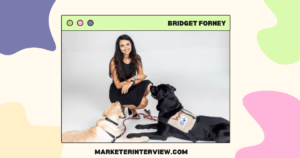
Being a WCC volunteer means I get to help dogs become the best dogs they could ever be and help them reach and touch countless people as they learn and train every single day. Being a WCC volunteer means the service dogs in training I work with get to touch the hearts of so many people along their journey, and the many people they reach throughout their training period are just the beginning of their path in changing the lives of people and veterans.
Working with service dogs in training has changed the way I see almost everything! I often relate training concepts to what’s happening with client work or in business relationships. There’s a congruence between leadership and dog training that you can apply to professional life, and I’m constantly seeing new analogies that offer fresh insights on leadership and work just from working with service dogs.
